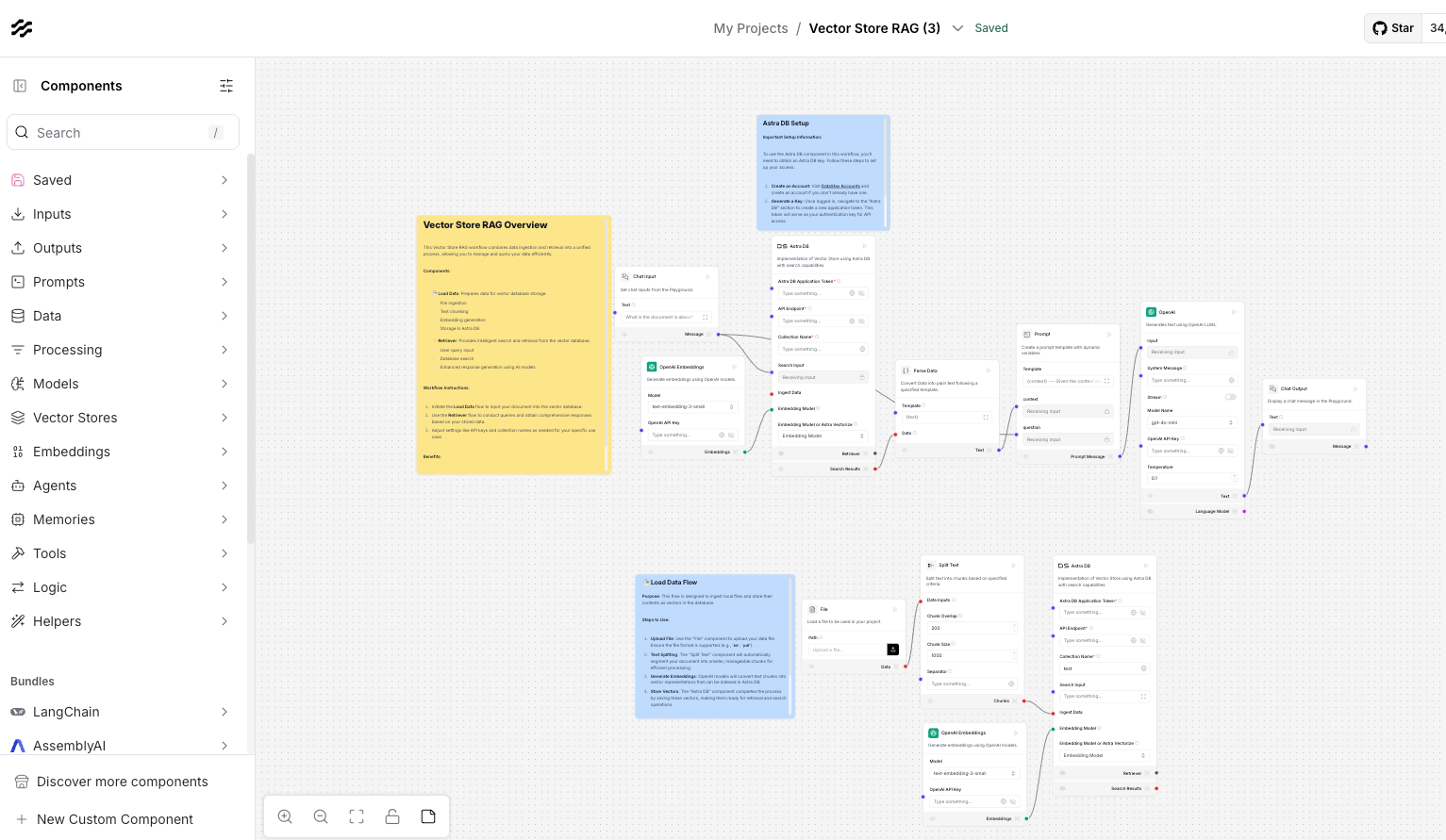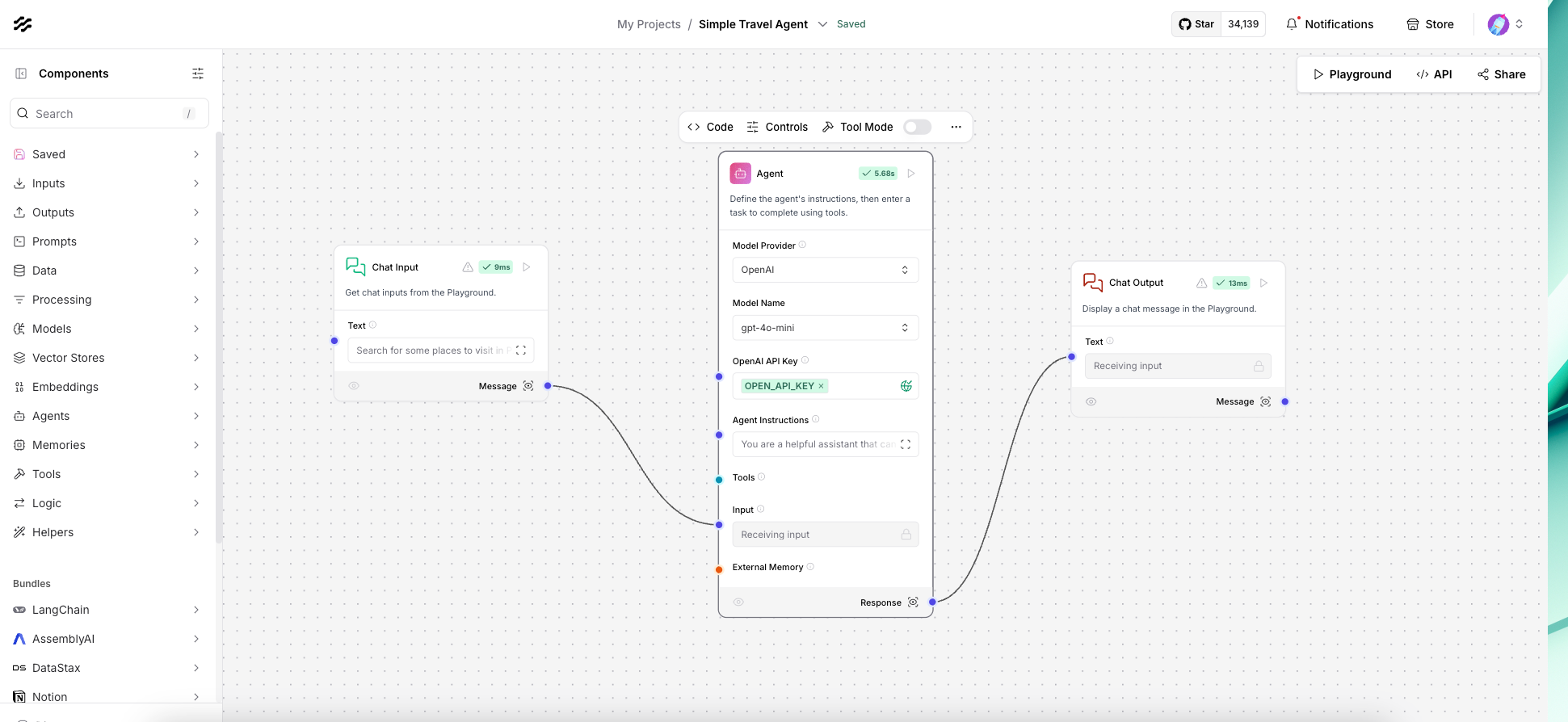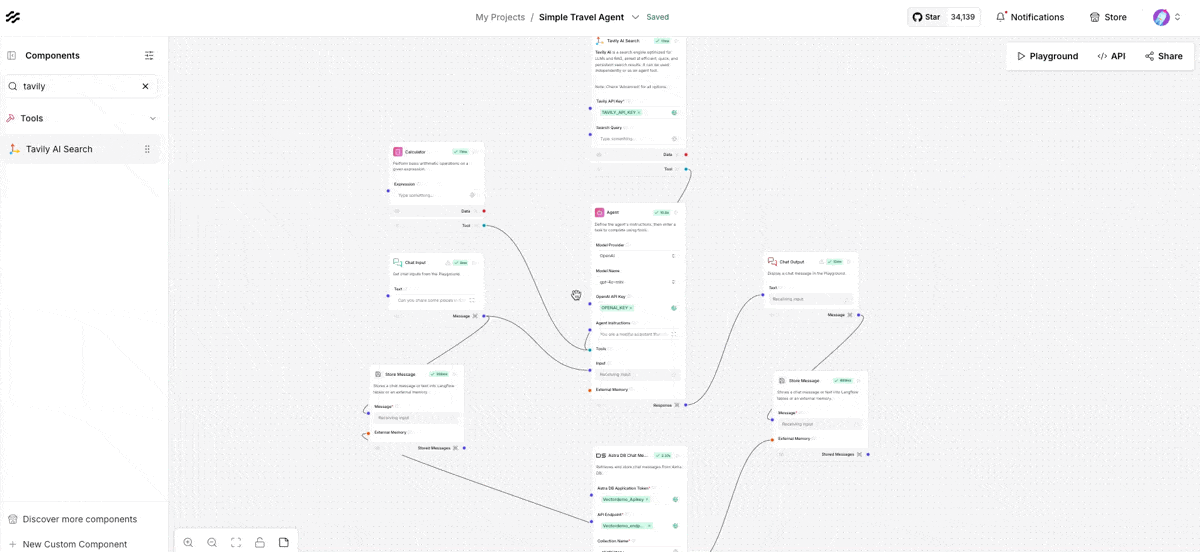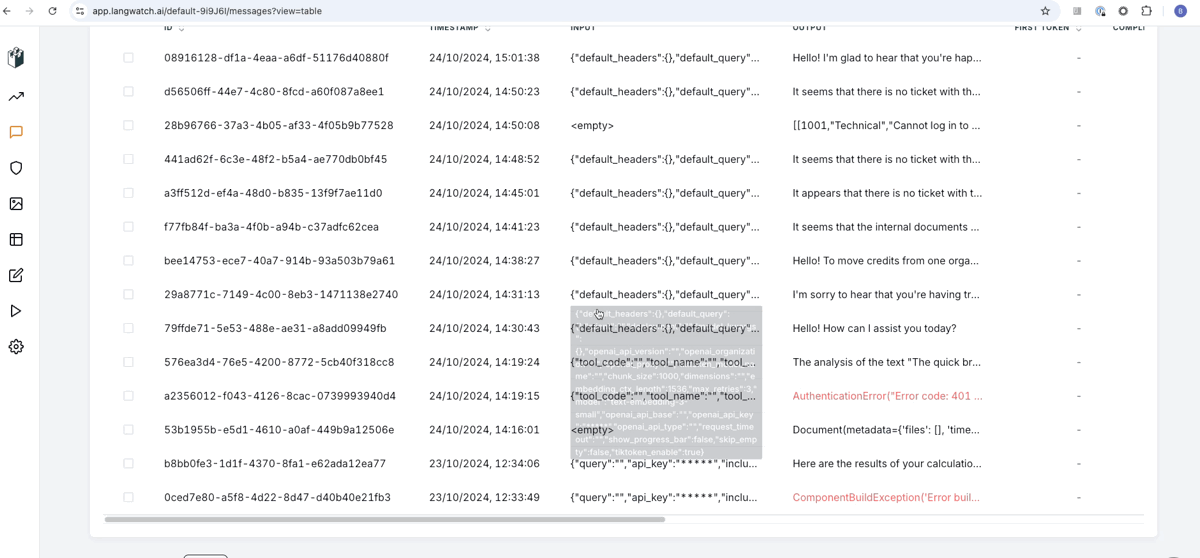Have you ever thought about what it would be like if AI could figure things out for you, without you lifting a finger? Welcome to the exciting world of AI agents! These smart systems are shaking up the programming world and transforming how we approach problem-solving in applications.
Traditionally, developers would carefully design functions and set specific rules for when to execute them. But agents? They're turning things upside down with this new type of AI apps. Instead of micromanaging every decision, we're letting large language models (LLMs) take the wheel. These intelligent systems can analyze a situation and figure out the best next move all on their own.
At their simplest, agents are AI systems designed to get things done on its own. Think of an agent as more than just a program that follows rules; it’s a decision-maker with reasoning capabilities, powered by AI, specifically LLMs.
Agents decide what to do next based on the situation and the tools they have access to. They don’t wait for you to tell them every step; they figure it out themselves.
In this post, we're going to roll up our sleeves and build a simple agent from scratch in Langflow. We'll also take a peek at some cool observability tools, LangSmith and Langwatch, to see what our Agent is up to behind the scenes.
Ready to get your hands dirty and create your first Langflow agent? Let's jump in!
What is Langflow?
Before we get into the details of agents, let's talk about the awesome playground we'll be using: Langflow.

Langflow is a game-changer for anyone interested in building AI applications. It’s an open-source framework that makes creating multi-agent systems and retrieval-augmented generation (RAG) setups straightforward and even fun. Powered by Python, it’s flexible and easy to customize, fitting nicely with whatever LLM or vector store you’re using.
What I love about it is how intuitive it feels, you don’t need to be an expert to start building something impactful. Whether you’re testing an idea or creating a production-ready solution, Langflow gives you the tools to make it happen.
Langflow's interface is super user-friendly. You can literally drag and drop AI components, connecting them like building blocks to create something that works. It’s a huge time-saver, especially for developers who want to quickly prototype ideas and turn them into real, practical solutions.
I like to think of Langflow as the Lego of AI tools. Each block (or component) has a specific function, and when you connect them just right, you create something amazing!
Whether you're a developer exploring open source or looking for a seamless experience in the cloud, Langflow has you covered. You can explore the open-source version on https://docs.langflow.org/getting-started-installation or try the cloud version here to get started!
What is an agent?
Alright, let's break it down. In Langflow, an agent acts like a smart assistant that uses different tools to get tasks done. These tools can range from simple APIs, like pulling in real-time stock prices from a financial data source, to more complex tasks like using a calendar API to schedule meetings or querying a database to retrieve product information for an e-commerce site.
The agent can also link with other workflows, like sending a notification via Slack or automating social media posts based on scheduled content in a social media management tool.

The cool thing about agents is they use a language model to decide what actions to take and in what order. They can even use the output from one tool to make the input for another better. It's like they're solving a puzzle, figuring out which piece (tool) fits best at each step.
Key things to remember:
Tool calling - Imagine you have a smart assistant that not only gathers data from one source but then goes ahead and uses that data to automate tasks in another. This is exactly what tool calling does. It’s like a multitasking wizard that saves you time by connecting tools and systems you use daily.
An agent could keep an eye on your inbox for new invoices, pull out important details like the amount and due date, and automatically record that information in a financial tool like QuickBooks or Google Sheets. No more manually tracking incoming bills!
One agent with multiple iterations - Some tasks require multiple steps to get done. Instead of you doing them one by one, an agent can take care of the entire process from start to finish. It’s like following a recipe, with the agent acting as the chef who preps, cooks, and serves everything perfectly.
You could have only one agent that checks a flight search API (like Skyscanner or Google Flights), finds the best prices based on parameters you’ve set, and books a ticket using your frequent flyer program, all without you lifting a finger by using multiple tools!
Multi-agent setups - When you need to tackle more complex workflows, why not have a team of agents handle different parts of the job? This is what multi-agent setups are all about, multiple specialized agents working together to solve a larger problem—just like how teams collaborate.
In marketing, one agent could collect leads from forms submitted on your website (via Google Forms or HubSpot). A second agent could then segment these leads based on criteria like company size or expressed interest. Finally, a third agent could launch personalized email campaigns in Mailchimp, fully automating your marketing outreach and ensuring targeted follow-up with minimal effort.
Agents in Langflow
Now, here's where Langflow really shines. It turns all that complex agent stuff into clear, visual components that you can easily manage. Like building with LEGO, each piece has its place and purpose.
In Langflow, we've got some key players that work together to make the magic happen:
- Chat input - This is where users type in their questions or requests. Think of it as the front door to your AI system.
- Prompt - Think of this as the instructions we give our AI on how to respond. It's like giving your AI a personality and a job description all in one.
- Chat memory - This lets our AI "remember" what's been said in the conversation. Without it, your AI would be like a goldfish, forgetting everything after a few seconds!
- Agent - This is the mastermind that figures out which external resources or plugins the AI needs to use. It's like the manager of your AI team, delegating tasks to the right tools.
- Tool - These are the specific functions or APIs our agent can use, like a calculator or search engine. Think of them as the essential instruments in your AI machine.
- Chat output - This is where our AI sends its response back to the user. It's the final product of all that behind-the-scenes magic.
Building a simple agent in Langflow
Enough theory – let's get our hands dirty and build something! We're going to create a basic agent in Langflow, starting simple and then ramping it up.
Step 1: Setting up the canvas
First, let's set up our canvas with the basics:
- Chat input
- Agent with OpenAI key
- Chat output
While preparing the agent, we will need an OpenAI key so here’s how you can prepare it in the global variables:

If you plug in all the components, use the OpenAI variable, and try to run it, you'll build these components.

Step 2: Giving our agent memory
Now, let's upgrade our agent with a memory:
- Add the "Astra DB Chat Memory" component
- Go to the Controls section in our agent and toggle the "External Memory" option

Test it out with a series of related questions to see if it remembers. It’s interesting to see how it learns!
Step 3: Adding our first tool
Let's add our first tool: the Calculator.

Easy peasy! For now, let's leave the system prompt as is and head straight to the playground to chat with our agent.
Step 4: Testing our agent
Time for a test drive! Let's ask our agent something that would make a regular LLM sweat:
"What is 51231234123 * 51295182141888811238?"

LLMs usually struggle with complex math, but give them a calculator tool, and voila! They can delegate that task and nail it. It's like having a math genius on speed dial.
Step 5: Expanding our agent's abilities
Let's give our agent some web-searching superpowers:
- Add the "Tavily AI Search" tool for web searches.

Test it with something like “Can you share some places in Barcelona and images of them?”

Step 6: Giving our agent a purpose
Finally, let's turn our jack-of-all-trades into a master of one:
- Add a prompt component with detailed instructions
- Let's transform it into a "Travel Agent" with a comprehensive system prompt

A great prompt for this would tell the agent to be friendly, knowledgeable, and to always prioritize the traveler's needs and preferences. It should cover everything from understanding travel needs to providing tailored advice and even promoting responsible tourism.
Add observability with LangSmith and Langwatch
As your AI projects become more complex, it's important to stay on top of what's happening behind the scenes. That’s where tools like LangSmith and LangWatch come in handy. They integrate seamlessly with Langflow, offering valuable insights into your AI’s performance. It’s like having a backstage pass to see exactly how your agent is making decisions!
You can find installation instructions for both tools in the Langflow documentation to get started quickly:
https://docs.langflow.org/integrations-langsmith
https://docs.langflow.org/integrations-langwatch

LangWatch:

These tools enable you to:
- Monitor your agent's performance in real-time
- Debug issues by tracing the agent's decision-making process
- Optimize your agent's efficiency by identifying bottlenecks
We'll dive deeper into how to use LangSmith and Langwatch with your Langflow agents in a future post. Stay tuned!
Wrapping up
There you have it! We've covered the basics of creating and customizing an agent in Langflow, from a simple calculator to a savvy travel assistant. The best part? This is just the beginning. Coming up, we'll explore how to build even cooler, more complex agents, create our own custom tools, and even set up multi-agent systems in Langflow.
Remember, Langflow is super flexible. You can create all sorts of agent pipelines and customize their tools to fit exactly what you need. The only limit is your imagination!
Plus, if you want a head start, you can find a pre-built version of this agent in the Langflow Store - a platform for discovering and sharing agent templates - listed as "Simple Travel Agent v.1.1."








